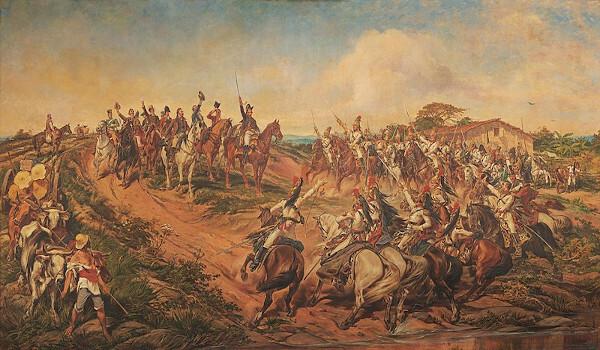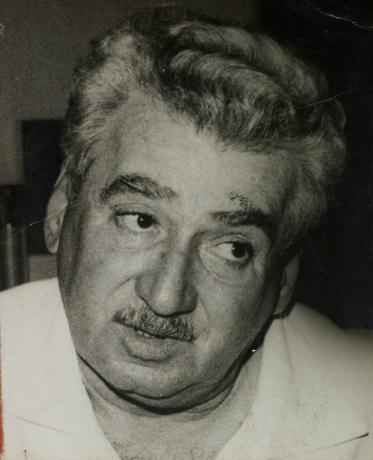Cubismwas one ofvanguards artisticearly 20th century, with exponents in visual arts and on literature. It is a revolutionary artistic movement, whose main characteristic is the observation of reality on different perspectives, involving the geometrization of shapes and the break with the credible representation of objects.
See too:Dadaism: an avant-garde that preached "anti-art"
Historical context
At changes brought about by Second Industrial Revolution, in the mid-nineteenth century, transformed the entry of the twentieth century. Large urban centers were consolidated, electric light became popular, as well as automobiles and photography. Over the course of a few decades, the Europe, until then predominantly rural, via the urban demographic explosion erect huge metropolises.
![Guernica, one of the most famous works by Pablo Picasso, precursor of the Cubist movement.[1]](/f/2f807d75d8f447b265e84d3240cefb95.jpg)
All of this gave rise to a new way of life, prompting artists to also propose a new way of representing reality. Cubism appears in 1907, initially as
a Parisian aesthetic movement, which ended up becoming popular throughout Europe and the Americas, inaugurating a new way of making art, in response to the new way of life established at the beginning of the 20th century.Features
Forerunner, revolutionary, innovative, Cubism broke with one of the most traditional characteristics of painting: the use of flat perspective. in favor of a true liberation in art, Cubists abolished copying. The artist must create, not copy — that's the end of mimetic art.
Thus, there is no more in art no commitment to representing the real appearance of things. Several faces of the same object are portrayed in the same plane, the object can be fragmented, juxtaposed, remade in collages or reduced to just geometric figures. It is this new use of geometry, by the way, that christens the movement:
"He despises everything, reduces everything, places, figures and houses to geometric schemes, to cubes."
Excerpt from the article on the 1908 Autumn Salon, written by Louis Vauxcelles, about the works of Georges Braque.

The horizon of creating an art that broke with academicism provided a great interaction between artists from different areas: painters, sculptors, musicians and writers united in close dialogue and constant integration. Thus, the breaks in Cubism had their place in literature as well.
The Cubist movement is divided into two phases:
- Analytical Cubism (1909): whose characteristic is the total decomposition of the objects represented. To break with the visual representation, several overlapping and fragmented angles of the same object were presented, in favor of a conceptual representation. Often this emphasis on the destruction of apparent forms made it virtually impossible to recognize any figure in paintings from this period.
- Cubismsynthetic (1911): moment when there is a certain reduction in the fragmentation of objects, making the figures recognizable again. The technique of collage: other materials, such as pieces of newspaper, wood, glass and even entire objects, become part of the painting. The proposal of Synthetic Cubism is to take painting to new stimuli beyond the visual, also incorporating tactile elements.
Read more: Rachel de Queiroz – important Brazilian modernist writer
Do not stop now... There's more after the advertising ;)
Top artists
Georges Braque (1882-1963))
Painter of French origin considered the forerunner of cubism, together with Pablo Picasso. He produced paintings, prints, drawings and sculptures. It represented landscapes, still life and everyday objects, such as glasses and bottles, which are easily decomposed, as well as musical instruments, alluding to temporality of music, related to the spatiotemporal unity that the cubist technique sought with the representation of superimpositions of the same object in a Same time.
Pablo Picasso (1881-1973))
Also founder of Cubism, was born in Malaga, Spain. In addition to being a painter, he was also a ceramist, sculptor, set designer, playwright and poet. He was the author of a huge production, divided into several phases, leaving a legacy of more than 10,000 items. The preference for geometric lines, the overlapping of planes, the moderation in the use of colors and the direct influence of African art is striking in its Cubist phase. Picasso is the author of the work considered to be the inaugural of Cubism, Les demoiselles d'Avignon (1907).
Juan Gris (1887-1927))
Pseudonym of the Spanish painter and sculptor Juan José Victoriano Gonzalez, is famous for his works framed in the stage of synthetic Cubism. Among its main characteristics, the play of ambiguities between what is painting and what is reality, provided by the use of the collage technique, stands out.
Cubism in Brazil

The influence of European vanguards was imported to Brazil during the years of 1912 and 1917, culminating, in 1922, in the São Paulo Modern Art Week. It is above all from this event that works that make use of Cubist plastic art begin to exist in Brazil.
Tarsila do Amaral (1886-1973), famous artist of the First Phase ofBrazilian Modernism, calls himself cubist in 1923, in an interview with the Correio da Manhã newspaper: “I am linked to this movement that has produced effects on industries, furniture, fashion, toys, on the 4,000 exhibitors at the Autumn Salon and the Independent".
Lasar Segall, Di Cavalcanti and Cândido Portinari were also influenced by Cubist plasticity, expressed in two-dimensionality of works, in the banishment of flat perspective and in the preference for the representation of objects using geometric shapes.
cubism in literature
Cubist writers sought procedures similar to those of plastic artists to also reformulate literary practice. They took fragmentation, collage and recreation of the objects represented through metaphors and analogies into the text.
In poetry, the free verse expression, of irregular meter and often without punctuation, is generally structured in cuts, in fragments of scenes and sentences that form the whole. At multiple perspectives they are also found in the textual plane, so that the writer should not describe reality in detail, but capture and validate the different points of view about things. Cubist poets and prose writers make use of the collage technique through the combination of words: each one bringing an image, an idea, several associations.
Guillaume Apollinaire (1880-1918), French poet, was one of the first writers to propose a literary aesthetic of Cubism. His calligrams represent the maximum disruption of the text's form: it is the emergence of a visual poetry, in which the structure of the verses refers to an image that, in turn, refers to the content of the poem itself. He was a great influencer of Concretism.

Lookmore: What was Concretism?
Also influenced by Cubism were authors Gertrude Stein, Vladimir Mayakovsky, Max Jacob, among others.
In Brazilian literature, Cubism finds its greatest exponent in Oswald de Andrade, poet, novelist and playwright, great name of the First Generation of Brazilian Modernism. See examples of the direct influence of cubist procedures on the author's work: many poems are made up of collages, like the poem “Hípica”:
Equestrian
record jumps
Penha Horses
Jockeys from Higienópolis run
the tycoons
The girls
And the orchestra plays
Tea
in the cocktail room
(Oswald de Andrade)
We realized that there is no detailed description, but several fragments that represent, each, a different perspective, forming a frame of overlays, typically cubist traits. The absence of punctuation also allows the reading to be done in one breath, which aesthetically approximates the poem to the horse race itself.
A similar procedure can be seen in the poem “City”:
City
Rockets pop up in the sky from time to time
There is a thin girl who entered the cinema
dressed by the last ribbon
Conversations in the garden where benches grow
frogs
Look
Lighting is white coal
moms are calling
The orchestra plays in the woods
(Oswald de Andrade)
The description of the urban portrait begins with the sky, in the first verse; then migrates downwards, the vision of the girl entering the cinema; then a glimpse of the garden, where benches grow, bringing inanimate and geometric objects closer to organic life. They are free verses, portraits constructed of flashes from various angles, reinforced by the invitation “Look”, in the sixth verse. In the end, “The orchestra rabecoa na mata” completes an approximation, metaphorical or literal, of the urban space and the natural landscape, creating, in a single text, multiple images associated with a single scenario.
Note
[1] tichr / Shutterstock
by Luiza Brandino
Literature teacher


